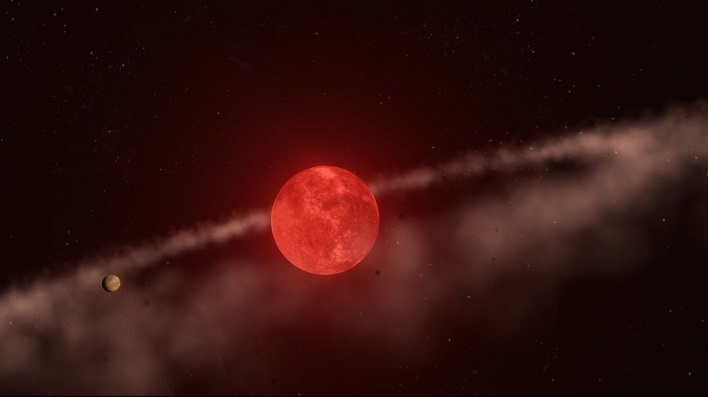A Death-Defying Planet That Shouldn't Exist Leaves Astronomers Totally Bewildered

Our very own Sun will one day reach its end of life, and when it does it will expand to 100 times its current size. At that moment in time, the Sun will most likely envelope the Earth in a hot plasma, essentially eradicating our home planet. However, new research by an international team of astronomers suggests that an exoplanet actually survived what should have been certain death, giving hope to other planets that may face a similar destiny.
"Engulfment by a star normally has catastrophic consequences for close orbiting planets. When we realized that Halla had managed to survive in the immediate vicinity of its giant star, it was a complete surprise," remarked Dr. Huber, second author of the study and Australian Research Council Future Fellow in the School of Physics and Sydney and Sydney Institute for Astronomy.

Dr. Huber explained that as Baekdu expended its core hydrogen fuel, it would have "inflated up to 1.5 times the planet's current orbital distance," engulfing the planet completely as it did, before shrinking back down to its current size.
“Together, these observations confirmed the existence of the planet, leaving us with the compelling question of how the planet actually survived,” remarked Dr. Huber. “The observations from multiple telescopes on Maunakea were critical in this process.”
One possible explanation as to how Halla survived is that the planet may have actually been part of a binary system consisting of a red giant star and a white dwarf star. In this scenario, the two stars would merge, and in turn, prevented the giant red star from expanding large enough to engulf Halla in the process.
The second possibility presented by the researchers is that the exoplanet was created from the debris following the merger of the red giant star and a white dwarf star. Making Halla a newly born "second-generation" planet.
"The system was more likely similar to the famous fictional planet Tatooine from Star Wars, which orbits two suns," Professor Tim Bedding from the University of Sydney stated.
Being the first known close-in planet orbiting around a core-helium burning star, Halla provides evidence that exoplanets might still surprise astronomers and scientists. The new research will be able to be used while studying the many thousands of other exoplanets that orbit closely to their host star, giving researchers a better understanding of whether "death-by-star is a fate shared by all such close-in planets."
The research paper on the findings of the death-defying exoplanet can be read in full via the Nature Journal.

